
Did you know that some animals don’t have brains? Contrary to what many people believe, despite the lack of this important organ, these animals can still function normally, but how? Thanks to evolutionary processes, these animals have developed alternative methods to help them survive.
For more about these brainless animals and their characteristics, keep reading here at AnimalWised. Not only will we be listing over 13 Animals without a brain, but we’ll be adding some additional facts about each individual, read on for more!
How can animals function without a brain?
Although for us humans not having a brain would be unfeasible, there are many living animals that survive without a brain. Most of these brainless species are aquatic, predominantly because these animals retain morphologies similar to that of their ancient predecessors.
But, how can animals survive without a brain? Well, each species has adapted in specific ways which allow them to exist, feed, reproduce and excrete ‘normally.’ Whether we speak of an evolved medullary system, arms, tentacles, ganglia or nervous systems, every one of these below species has adapted and evolved differently, allowing them to survive.
Keep reading to discover our list of aquatic creatures without a brain and insects without a brain:
1. Starfish
Starfish are invertebrate animals that belong to the Asteroidea order which inhabit the deep sea. Starfish are characterized by their 5 to 50 arms, which vary depending on the species. These arms allow them to reproduce, hunt and excrete, offering them the ability to to live out their life cycle fully.
Starfish don’t have a brain are are also an animal without a heart. They do, however, have an incredibly intelligent nervous system formed by nerves and a nervous plexus that sends information to different parts of the body. This system, therefore, functions as a kind of ‘distributed brain.’ And thanks to this, they are able to receive and recognize different stimuli, as well as send "orders" to each part of their body.
For more about these fascinating brainless animals, we recommend reading our article where we discuss, ‘‘What do starfish eat?’’
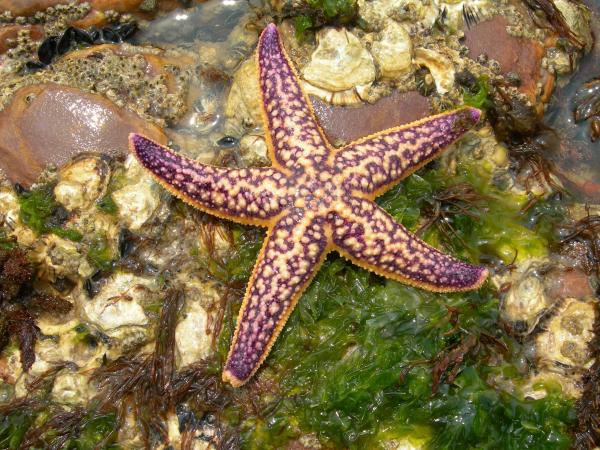
2. Sea cucumber
Sea cucumbers are echinoderms characterized a long and soft body. These echinoderms live in oceans depths, and like starfish, are among the animals without a brain.
But, how do sea cucumbers survive without a brain? Sea cucumber have different nerve endings located in their tentacles and pharynx, allowing them the ability to receive stimuli and send responses according to their environment. But not only do sea cucumbers not have a brain, but they are also one of the animals without a heart. Instead, they have an aquifer vascular system, which transports water, proteins and potassium ions throughout the body.
Did you know that sea urchins breathe through their anus? Amazing right!

3. Jellyfish
Jellyfish belong to the subphylum Medusozoa and are among the oldest marine animals in the world, dating back to five hundred million years ago. Not only do they not have a brain, but jellyfish also have no nervous system.
But, if jellyfish have no nervous system or brain, how do they survive? Jellyfish skin is covered with a network of interconnected nerves that sends information collected from touch. This system is more commonly known as a reticular system. Additionally, some species have ocelli, which are organs capable of detecting light that function as a ‘jellyfish brain’.
For more about the amazing jellyfish species, we recommend reading how do jellyfish reproduce?
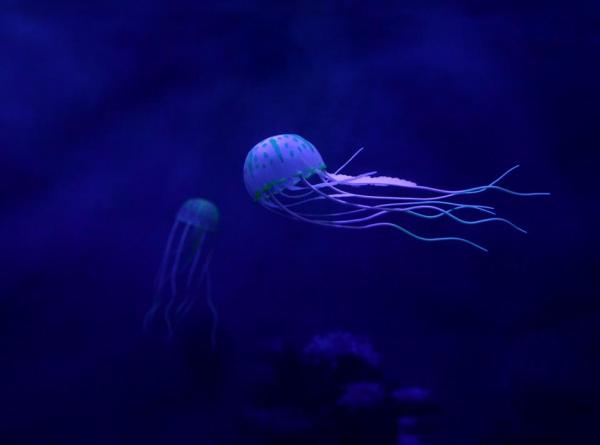
4. Coral
Coral are marine invertebrates which vary largely in types. These types of coral are organized among colonies of small individuals. Although at first glance they resemble rock formations or plants, especially when they make up large reefs, they are in fact living animals.
Corals have no heart, nervous system or brain, but are made up of a million small polyps with small tentacles made up of nerve endings. These polyps are organized in such a way that large coral communities can catch prey, as well as perceive their environment.
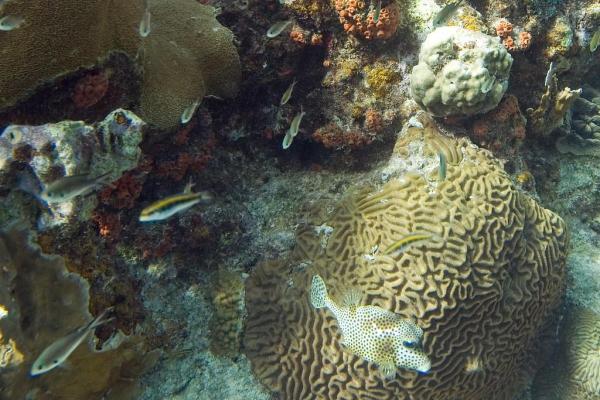
5. Sea Anemones
Sea anemones belong to the Actiniaria order and at first glace, like with coral, they resemble plants. In reality, however, they are aquatic animals that grow attached to a substrate of sand or rock.
Sea anemones have no brain or heart, but they do have a primitive nervous system that allows them to maintain vital balance, according to the stimuli they receive from their environment. Additionally, they have no organs, but they do have tentacles and ‘organelles’, which are tiny cellular structures with stinging properties.

6. Sponges
Sponges are animals of the phylum Porifera are among the marine animals without a brain as well as the oldest in the world. Sponges have inhabited our oceans since the Precambrian and their bodies have pores and internal channels with which they can pump the water. Additionally, they also have totipotent cells, which are able to change in function according to what the sponges need.
Thanks to this last characteristic, sponges do not require specific organs or a defined nervous system, since all their vital activity is performed at the cellular level.
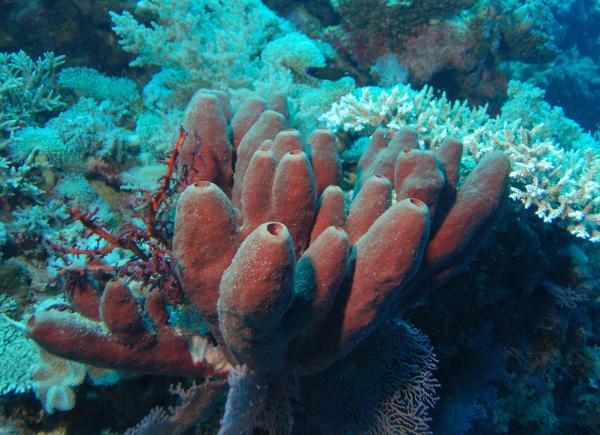
7. Portuguese man o’ war
Physalia physalis also known as Portuguese man o’ war, is an organism formed by a colony of individuals, which carry an appearance similar to jellyfish. Man-of-war measure between 15 and 30 centimeters and are formed by hydrozoans, which are very small organisms grouped together to survive. Among this colony, every different organism distributes essential vital functions which make up for their lack of nervous system, heart or brain.

8. Crinoids
Crinoids are a type of echinoderm of the Crinoidea class. Crinoids, commonly referred to as sea lilies, are characterized by their plant-like appearance.
These echinoderms are incredibly old, records showing their presence dating back to the Paleozoic era. Crinoids have no brain, but like other echinoderms, they do have a nervous network that allows them to perceive what’s happening around them.
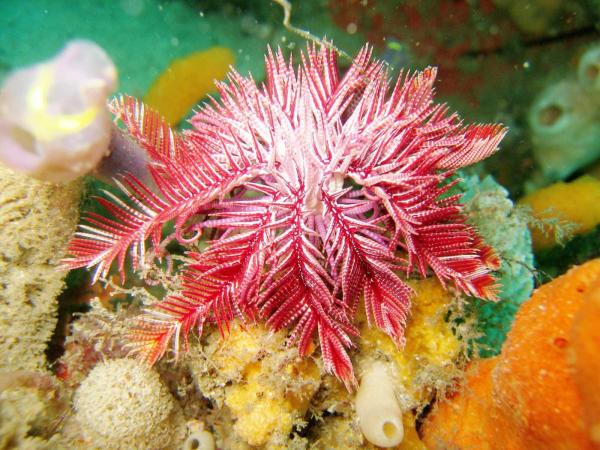
9. Ascidians
Sea squirts are another incredibly interesting marine animal that, at first glance, resemble plants. Ascidians live attached to rocks and seashells, from where they capture food particles through to the water currents which they absorb. Little is known about this species, except for that they do lack a nervous system, brain and heart.

10. Lancetfish
Lancetfish (Branchiostoma lanceolatum) is an incredibly primitive species without a brain. Lancetfish measure only 5 centimetres and have no skeleton, brain or sensory organs. Additionally, the lancet has a poorly defined nervous system, which is also not protected by vertebrae.
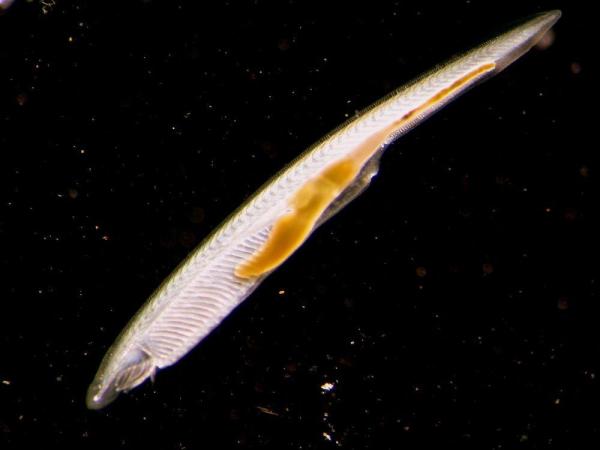
11. Ctenofora
There are around 200 species of Ctenofora, and there is actually very little known about these marine animals.
Their bodies are simple and variable, since some have tentacles, similar to jellyfish, while others do not. Ctenofora lack a circulatory or excretory system, but they do have a simple nervous system, without a brain. Like other marine animals, the nervous system is distributed in networks throughout the body and, thanks to this, they are capable of receiving stimuli.
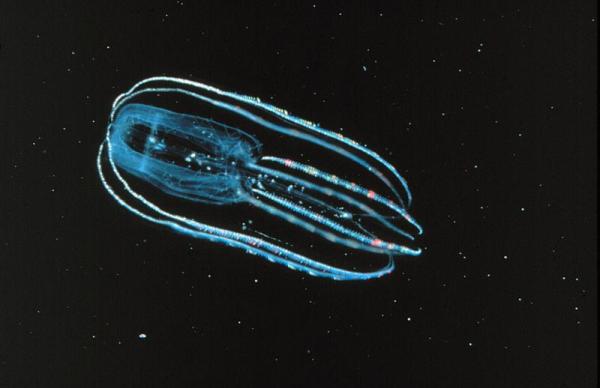
12. Leeches
Leeches (Hirudinea) can survive in marine, terrestrial and/or freshwater environments. Leeches are characterized by an elongated body, somewhat fat and viscous. Leeches are predatory animals and some species even feed on blood. Leeches have no brain, but do have neural networks which are distributed throughout the body body, thanks mainly to small nodes and sensory organs.
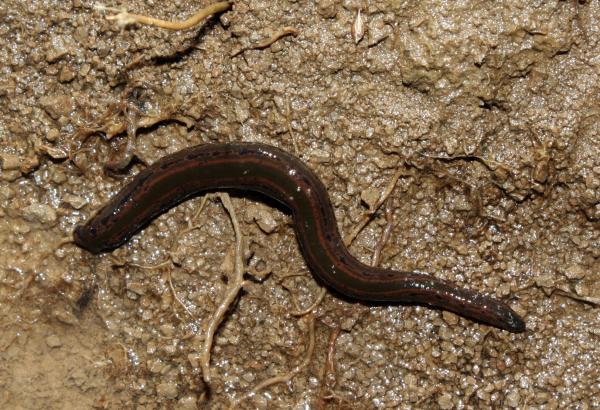
13. Earthworms
Earthworms (family Lumbricidae) are among the main land animals without a brain. Earthworms prefer to live in humid environments. Earthworms have no brain, and are made up of only a mouth, an anus and a series of muscles throughout the body.
Earthworms have a circulatory system dominated by a central valve that function as a heart. With respect to the nervous system, they do not have a brain, but do carry several lymph nodes.

Insects without brains
As you may have noticed, most brainless animals are aquatic, but what about terrestrial animals? Do insects have brains? Even though incredibly small in size, most insects do have a fully formed brain. Insects have a well-defined nervous system, which is distributed in the head, thorax and abdomen, where nerve ganglia are located; these ganglia capture nerve impulses or stimuli.
Insects have a "main" brain and some "secondary" ones, known as ganglionic masses. An insect’s main brain is above the esophagus and is referred to as a supraesophageal ganglion. The other three secondary brains in insects include:
- Protocerebrum: is located in the esophagus, where the annelids were once originally located. This secondary brain controls vision.
- Deutobrain: is located in the esophagus and is connected to the antennae, appendages that perceive the olfactory stimuli.
- Tritocerebrum: is quite small in size and is located underneath the main brain. The tritocerebrum controls the sympathetic nervous system, including visceral and taste functions.
Do fish have brains?
It’s a common belief that fish have little memory and lack intelligence. For this reason, many people believe that fish have no brain. But, contrary to popular believe, most fish (except for those extremely primitive ones) do have brains, which are just as defined as the rest of their vital organs.
A fish’s brain, although considerably small in size, is usually divided into several regions (just like that of terrestrial species).
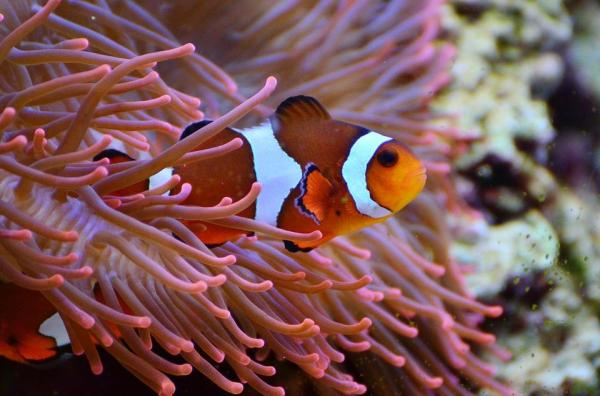
Which animal have two brains?
While on the topic of animals and brains, we need to clarify that there are no animals which carry two distinct brains. The only time in which one can confirm an animal has two brains is if they are born with two heads, caused by a mutation. This is scientifically referred to as polycephaly.
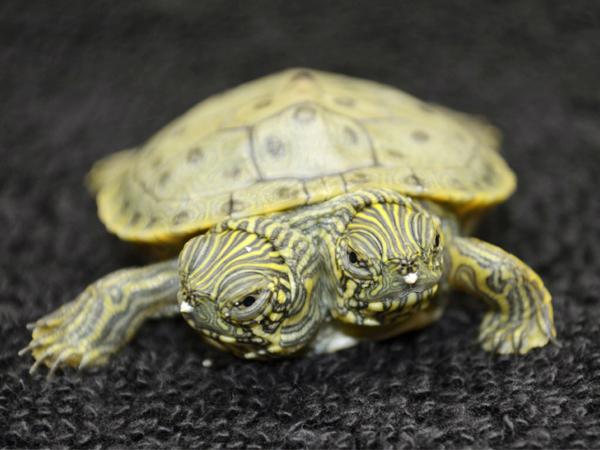
If you want to read similar articles to Animals Without A Brain - Names & Characteristics, we recommend you visit our Facts about the animal kingdom category.
- Pandolfi, M. (2013, 15 de enero). "Aprendiendo de los peces: un cerebro con propiedades únicas y un recurso estratégico". Conicet. Consulta: https://www.conicet.gov.ar/aprendiendo-de-los-peces-un-cerebro-con-propiedades-unicas-y-un-recurso-estrategico/
- Birba, A. y cols. (2013). "El cerebro de los peces y sus variadas formas de reproducción". Ciencia Hoy. Consulta: http://cienciahoy.org.ar/2013/10/el-cerebro-de-los-peces-y-sus-variadas-formas-de-reproduccion/
- Riedl, R. (2011). Fauna y flora del mar Mediterráneo. Barcelona, España: Ediciones Omega.
- Simo López, L. (2016). "Sistema nervioso de las medusas". Prezi (presentación). Consulta: https://prezi.com/nvofoqjvxp_k/el-sistema-nervioso-de-las-medusas/
- Plitt, L. (S.F.). "Larvas de coral: sin oídos, pero escuchan". BBC Mundo. Consulta: https://www.bbc.com/mundo/ciencia_tecnologia/2010/05/100520_coral_sonidos_lp.shtml
- "Medusas". Centro Oceanográfico de Murcia. Consulta: http://www.mu.ieo.es/medusas/physphy.htm
- Conway Morris, S.; Collins, D. H. (marzo de 1996). "Middle Cambrian Ctenophores from the Stephen Formation, British Columbia, Canada". Philosophical Transactions of the Royal Society: Biological Sciences (Londres: The Royal Society) 351 (1337): 279-308.
- La Cruz Lozano, J. (2005). Entomología, morfología y fisiología de los insectos. Universidad Nacional de Colombia.
- Danulat, E.; Graham, E. (2002). Reserva marina de Galápagos. Fundación Charles Darwin/Servicio Parque Nacional Galápagos, Ecuador.